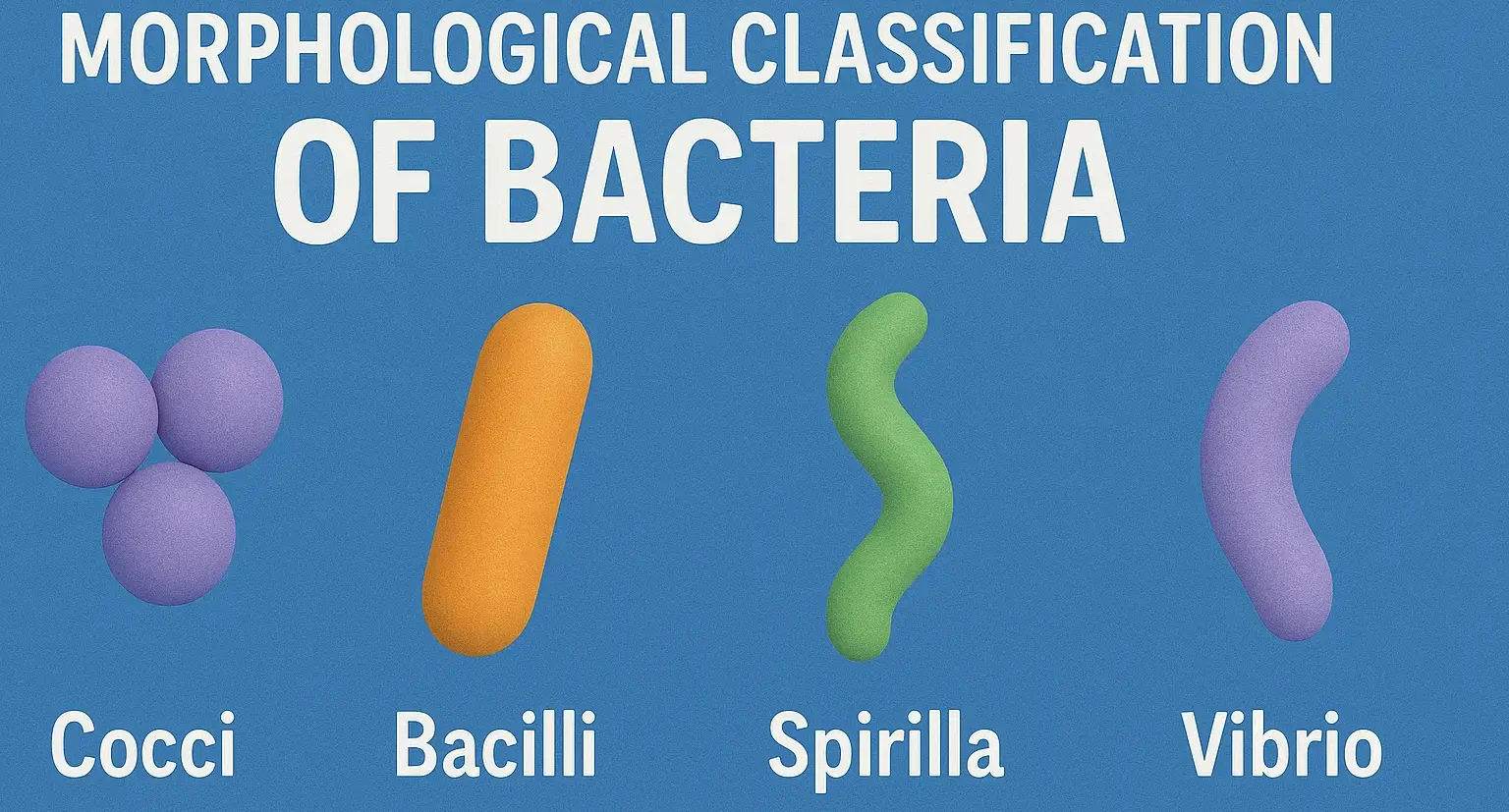- Morphological Classification of Bacteria is based on their morphology (shape), arrangement, staining properties, and other characteristics.
- Here are the main types of morphological classification:
Based on Shape:

This is a sample ad placement!
- Cocci: Spherical bacteria.
- Diplococci: Pairs of cocci (e.g., Neisseria).
- Streptococci: Chains of cocci (e.g., Streptococcus).
- Staphylococci: Clusters of cocci (e.g., Staphylococcus).
- Tetrads: Groups of four cocci (e.g., Micrococcus).
- Sarcinae: Cubic configuration of eight cocci.
- Bacilli: Rod-shaped bacteria.
- Diplobacilli: Pairs of bacilli.
- Streptobacilli: Chains of bacilli.
- Coccobacilli: Oval and similar to cocci.
- Spirilla: Spiral-shaped bacteria with rigid bodies.
- Spirochetes: Spiral-shaped bacteria with flexible bodies.
- Vibrios: Comma-shaped bacteria (curved rods).
Based on Arrangement:
- Diplococci: Pairs of cocci.
- Streptococci: Chains of cocci.
- Staphylococci: Grape-like clusters.
- Tetrads: Groups of four cocci in a square.
- Sarcinae: Cubic configuration of eight cocci.
This is a sample ad placement!
Based on Staining Properties:
-
Gram Stain:
- Differentiates bacteria into Gram-positive (purple) and Gram-negative (pink) based on cell wall composition.
-
Acid-fast Stain:
- Identifies acid-fast bacteria (e.g., Mycobacterium) that have waxy cell walls resistant to Gram staining.
-
Endospore Stain:
- Highlights the presence of endospores in some bacteria.
Based on Other Morphological Features:
- Size: Varies significantly between species.
- Motility: Presence and arrangement of flagella (monotrichous, lophotrichous, amphitrichous, peritrichous).
- Colony Morphology: Appearance of bacterial colonies on agar plates, including size, shape, color, texture, and hemolysis on blood agar.
This is a sample ad placement!
Thank you for reading from Firsthope's notes, don't forget to check YouTube videos!

